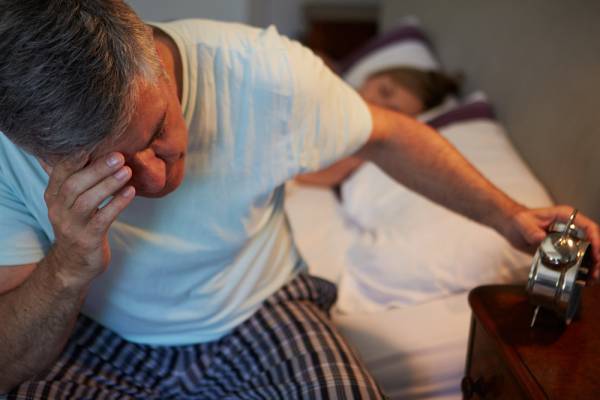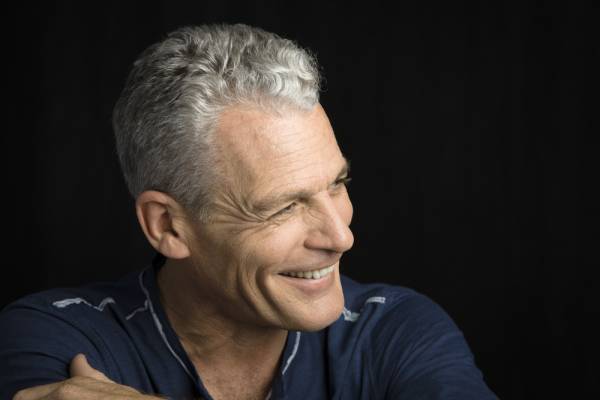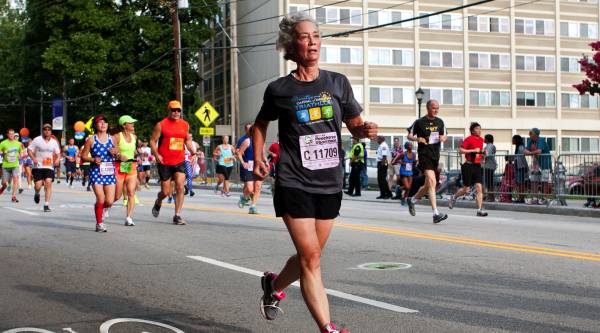Hormone replacement therapy. That’s a scandalous topic, isn’t it? While some people scoff at the idea of replacing hormones as we get older, saying we should “run on our own steam” or “age gracefully,” I beg to differ.
Human life expectancy has increased because of modern advancements including medical procedures and treatments. We don’t think twice about taking blood pressure medications or having colon polyps removed. Yet, for some reason, using hormones to prevent and treat disease and to just age in a more healthy way is thought to be unnecessary.
Well, I want to explain why hormone replacement is important for maintaining health and vitality as we age, especially for people interested in remaining active and pushing their bodies to reach athletic goals or at least maintain their health as long as possible. I won’t explain every benefit, but I will review the points most important for older athletes and most relevant to how bio-identical hormone replacement can help us age gracefully – but on our own terms.
Hormones and Aging
Let’s briefly review what happens to our hormones as we age. Most people are well aware that most women go through menopause, usually in their early fifties, which is when the ovulation ceases to occur monthly. Most of us are also aware that menopause makes women feel terrible and/or like they’re completely losing their minds. It usually involves hot flashes, crazy mood swings, and weight gain. And that’s just a few of the most obvious symptoms. Sounds fantastic, right?
But wait. Men don’t get off the hook here either. They go through something similar, called andropause, when the testes stop producing as much testosterone. For men, this often results in insomnia, moodiness, and basically everything else a woman goes through except the hot flashes.
“We don’t think twice about taking blood pressure medications or having colon polyps removed. Yet, for some reason, using hormones to prevent and treat disease and to just age in a more healthy way is thought to be unnecessary.”
So, we’re all in this together, gender be damned. And as you might expect, for people who are active and desire to remain this way, lower hormone levels are not only inconvenient for the reasons mentioned above but also make maintaining physical performance pretty difficult.
How so? Here are some of the main reasons lower hormones make staying active more challenging:
Insomnia
Yes, many men and women have trouble sleeping well before they hit their fifties and there are many different reasons for why someone might not be able to get to and stay asleep. But often, when someone’s estrogen and testosterone levels are out of whack, sleep patterns will suffer.
Many women complain of hot flashes that leave them dripping with sweat in the middle of the night, which, as you might expect, disrupts not only because it’s super uncomfortable, but also because most have to get up and change their clothes and/or sheets. Low testosterone levels can also leave many men and women feeling restless, anxious, and unable to initiate or stay asleep. And we know if we aren’t sleeping our bodies can’t repair muscles and connective tissue efficiently, and that means reduced ability to recover and train as hard as you’d like. Injuries and reduced performances are far more likely.
The Solution: The use of bio-identical hormone therapy (BHRT) with estradiol and testosterone has been shown to improve sleep quality by decreasing hot flashes and reducing anxiety, which usually translates to improved sleep and increased overall feeling of well-being. Who doesn’t want better sleep and recovery?

Decreased Muscle Mass and Increased Body Fat
Along with decreased testosterone and estrogen comes increased cravings for carbohydrates, a loss of insulin sensitivity, and decreased muscle mass. The cravings are likely due to the lower serotonin, dopamine, and norepinephrine levels and decreased receptor sites for these neurotransmitters.
Those neurotransmitters are the ones that make us feel happy or just “good.” When the levels drop, our bodies seek homeostasis and search for a way to increase those neurotransmitters again. The quickest and easiest way to do that is to eat something carby, something sugary, or some caffeine. These foods can bump up one or several of these neurotransmitters and make you feel better – temporarily. So, it becomes a vicious cycle of feeling bad, cravings, eating something, feeling better for a little while, and then feeling bad again.
“If our testosterone is low, it makes building and maintaining muscle mass. Hard. Really hard. And the less muscle you have, the harder it is to maintain a low body fat level.”
Most of us also know testosterone is an anabolic hormone, meaning it helps us to build or repair our bodies. If our testosterone is low, it makes building and maintaining muscle mass. Hard. Really hard. And the less muscle you have, the harder it is to maintain a low body fat level.
If you’re losing muscle but eating the same amount of calories day in and day out, you’re going to gradually start gaining adipose tissue. Even if the scale doesn’t change much, your clothes might start to fit differently (i.e. tighter in the waist or bigger in the arms, shoulders, glutes, and thighs). That’s not exactly good news for anyone that really wants to still look good in a bathing suit or participate in any kind of sport past the age of fifty.
Lowered testosterone levels are also associated with decreased insulin. This means the carbohydrates you eat are less likely to get stored as glycogen in the cells of organs and muscles and far more likely to get stored as fat. This means more muscular fatigue and less ability to feel recovered and an increased risk of gaining fat instead.
The Solution: Again, by increasing hormone levels back to their baseline via BHRT, neurotransmitter levels are increased, thereby decreasing cravings and food intake, not to mention making you feel happier in general.
Having closer to ideal testosterone levels also makes it easier to gain or maintain muscle and strength and avoid gaining fat. You don’t have to accept that the spare tire is just a fact of life!

Bone Density
As we get older and our hormone levels decrease it is common for bone loss to occur. You know the elderly lady with the hump in her back or the older man who has to walk stooped over? That’s a result of bone loss, and bone loss begins when testosterone and estrogen start dropping.
“In order to prevent losing bone mass, your best options are weight-bearing exercise and hormone replacement therapy.”
The hump and stooped posture aren’t the only side effects. Bone pain, spine and back problems, and fractures and breaks are also the result of weakened bone. Loss of estrogen has long been thought to be the main cause of this bone loss, but we’re learning that testosterone also plays a major role.
The Solution: I can’t think of too many things that will slow an active person down more than bone and spine degeneration pain and fractures. In order to prevent losing bone mass, your best options are weight-bearing exercise and hormone replacement therapy.
Subcutaneous estrogen and testosterone therapy have been shown to increase bone density in dramatic fashion and without the side effects of the drugs that specifically claim to treat bone loss.
Heart Health
I can’t think of many things that mess up a good training session like your heart not working. So, it would behoove us to protect our heart, especially as we get older, right?
The Solution: BHRT is a great way to reduce your risk of cardiovascular diseases like artherosclerosis and blockage of the arteries (aka heart attacks). Many studies have shown that the use of BHRT decreases LDL cholesterol (the bad stuff), increases HDL (the good stuff), and decreases the risk of heart disease and myocardial infarctions.
Testosterone replacement has also been shown to improve functional capacity in those with heart failure. So, I’m going to assume most of you don’t have heart failure, but you do have a heart that you’d like to keep healthy. If your hormones are starting to dip, BHRT is a great way to keep your ticker in top shape.

Take Control of the Aging Process
As you can see, loss of hormones as we age can certainly put a damper on your athletic dreams. But the situation is not out of your control. You can make your own athletic destiny to a large extent by taking advantage of the right kind of hormone replacement.
BHRT can reduce your risk of heart disease, help you maintain bone mass, improve your sleep and recovery, improve your moods, and help you maintain muscle mass and decrease fat. Sounds great, right? I think so too.
There are some things that need to be taken in consideration, like what kind of hormones you are using and if you are a good candidate for hormone replacement. Stay tuned for more information on how to seek out the best kind of hormone therapy, how to find the right kind of provider, and if you’re someone who might not benefit from BHRT.
Further Reading:
- The Controversy Over Testosterone Replacement Therapy
- 3 Natural Libido Enhancers (Especially for You, Ladies)
- The Role of Testosterone for the Female Athlete
- New on Breaking Muscle Today
References:
1. Hotze SF and Ellsworth DP. Point/Counterpoint: The case for bioidentical hormones. J Am Physicians and Surgeons 2008; 13:43-36.
2. Synder PJ, Peachey H, Berlin JA. Effects of testosterone replacement in hypogonadal men. J Clin Endocrinol Metab 2000; 85: 2670-2677.
3. Wang C, Swerdloff RS, Iranmanesh A, et al. Transdermal testosterone gel improves sexual function, mood, muscle strength, and body composition parameters in hypogonadal men. J Clin Endocrinol Metab 2000; 85:2839-2853.
4. Vedi S, Purdie DW, Ballard P, et al. Bone remodeling and structure in postmenopausal women treated with long-term, high-dose estrogen therapy. Osteoporosis Int 1999; 10:52-58.
5. Aminorroaya A. Kelleher S, Conway AJ, et al. Adequacy of androgen replacement influences bone density response to testosterone in androgen-deficient men. Eur J Endocrinol 2005; 152:881-886.
6. Pereda CA, Hannon RA, Naylor KE, et al. The impact of subcutaneous oestradiol implants on biochemical markers of bone turnover and bone mineral density in postmenopausal women. Br J Obstet Gynaecol 2002; 109:812-820.
7. Schubert M, Bullman C, Minnemann, et al. Osteoporosis in male hypogonadism: responses to androgen substitution differ among men with primary and secondary hypogonadism. Hormone Res 2003; 60:21-28.
8. Notelovitz M, Johnston M, Smith S, et al. Metabolic and hormonal effects of 25 mg and 50 mg 17 β-estradiol implants in surgically menopausal women. Obstet Gynecol 1987; 70:749-754.
9. Holland EFN, Chow JWM, Studd JWW, et al. Histomorphometric changes in the skeleton of postmenopausal women with low bone mineral density treated with percutaneous estradiol implants. Obstet Gynecol 1994; 83:387-391.
10. Khastgir G, Studd JW, Fox SW, et al. A longitudinal study of the effect of subcutaneous estrogen replacement on bone in young women with Turner’s syndrome. J Bone Miner Res 2003; 18:925-932.
11. Khastgir G, Studd J, Holland N, et al. Anabolic effect of estrogen replacement on bone in postmenopausal women with osteoporosis: histomorphometric evidence in a longitudinal study. J Clin Endocrinol Metab 2001; 88:289-295.
12. Isidori Am, Giannetta B, Greco EA, et al. Effects of testosterone on body composition, bone metabolism and serum lipid profile in middle-aged men: a meta- analysis. Clin Endrocrinol 2005; 63:280-293.
13. Barlow DH, Abdalla HI, Roberts ADG, et al. Long-term hormone implant therapy – hormonal and clinical effects. Obstet Gynecol 1986; 67:321-325.
14. Farish E, Fletcher CD, Hart DM, et al. The effects of hormone implants on serum lipoproteins and steroid hormones in bilaterally oophorectomised women. Acta Endocrinol 1984; 106:116-120.
15. Ohlsson C, Barrett-Connor E, Shalender, et al. High serum testosterone is associated with reduced risk of cardiovascular events in elderly men. The MrOs (Osteoporotic Fractures in Men) Study in Sweden. J Am Coll Cardiol 2011; 58:1674-1681.
16. Worboys S, Kotsopoulos D, Teede H, et al. Subcutaneous testosterone implant therapy improves endothelium-dependent and independent vasodilation in postmenopausal women already receiving oestrogen. Heart Lung Circ 200; 9:A109.
17. Barbosa IC, Coutinho EM, Oladapo L, et al. An open-label study of subdermal implants of estradiol-only versus subdermal implants of estradiol plus nomegestrol acetate: effects on symptom control, lipid profile and tolerability. Gynecol Endocrinol 2009; 25:269-275.
18. Davis SR, Walker KZ, Strauss BJG. Effects of estradiol with and without testosterone on body composition and relationship with lipids in postmenopausal women. Menopause 2000; 7:395-401.
19. Fletcher CD, Farish E, Hart DM, et al. Long term hormone implant therapy – effects on lipoproteins and steroid levels in post-menopausal women. Acta Endocrinol 1986; 111:419-423.
Photos courtesy of Shutterstock.






